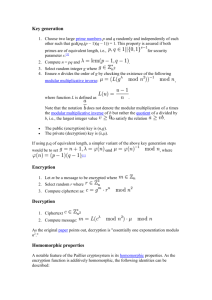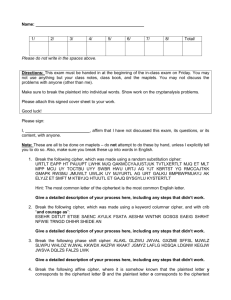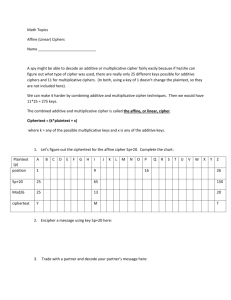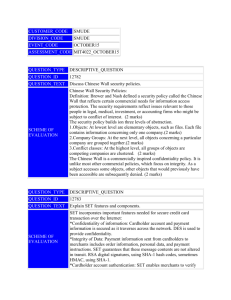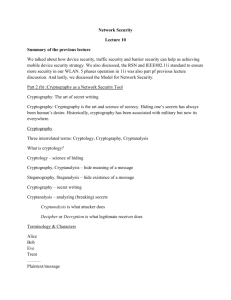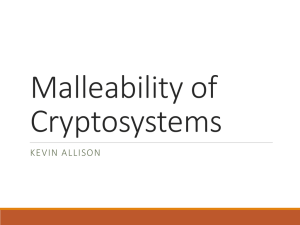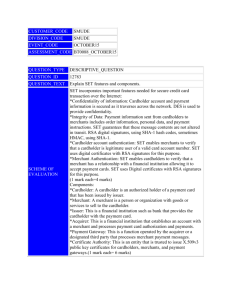Lecture 2 Handout
advertisement
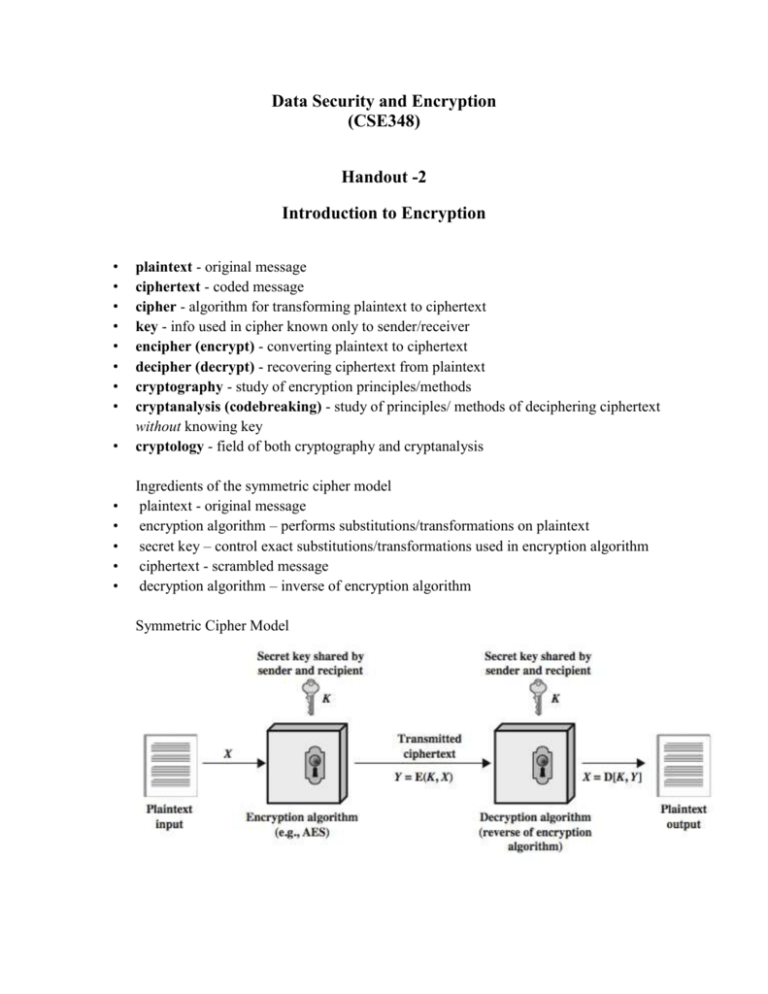
Data Security and Encryption (CSE348) Handout -2 Introduction to Encryption • • • • • • • • • plaintext - original message ciphertext - coded message cipher - algorithm for transforming plaintext to ciphertext key - info used in cipher known only to sender/receiver encipher (encrypt) - converting plaintext to ciphertext decipher (decrypt) - recovering ciphertext from plaintext cryptography - study of encryption principles/methods cryptanalysis (codebreaking) - study of principles/ methods of deciphering ciphertext without knowing key cryptology - field of both cryptography and cryptanalysis • • • • • Ingredients of the symmetric cipher model plaintext - original message encryption algorithm – performs substitutions/transformations on plaintext secret key – control exact substitutions/transformations used in encryption algorithm ciphertext - scrambled message decryption algorithm – inverse of encryption algorithm Symmetric Cipher Model • • • • • • • two requirements for secure use of symmetric encryption: – a strong encryption algorithm – a secret key known only to sender / receiver mathematically have: Y = E(K, X) X = D(K, Y) assume encryption algorithm is known implies a secure channel to distribute key Cryptanalysis objective to recover key not just message general approaches: – cryptanalytic attack – brute-force attack if either succeed all key use compromised Cryptanalytic Attacks ciphertext only only know algorithm & ciphertext, is statistical, know or can identify plaintext known plaintext know/suspect plaintext & ciphertext chosen plaintext select plaintext and obtain ciphertext chosen ciphertext select ciphertext and obtain plaintext chosen text select plaintext or ciphertext to en/decrypt -----------------------------------------------



